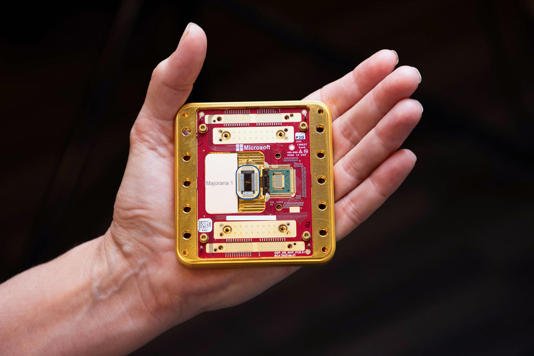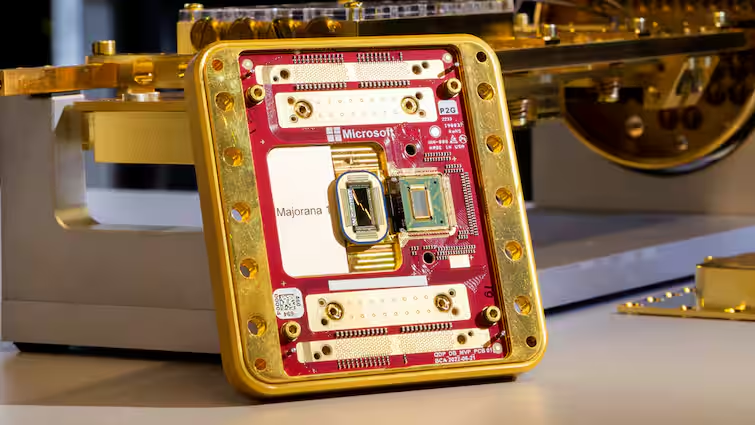Physical Address
304 North Cardinal St.
Dorchester Center, MA 02124
Physical Address
304 North Cardinal St.
Dorchester Center, MA 02124


In a groundbreaking announcement, Microsoft has introduced the Majorana 1, the world’s first quantum chip powered by a novel Topological Core architecture. This innovation is poised to accelerate the realization of quantum computers capable of addressing complex, industrial-scale challenges in the near future.
To appreciate the significance of Microsoft’s Majorana 1 chip, it’s essential to understand the journey of quantum computing. Traditional computers operate using bits that exist in one of two states: 0 or 1. Quantum computers, however, utilize qubits, which can exist in multiple states simultaneously, thanks to the principles of superposition and entanglement. This allows quantum computers to process vast amounts of data in parallel, offering solutions to problems previously deemed intractable.
The concept of quantum computing isn’t new. Theoretical foundations were laid in the early 20th century, with pioneers like Paul Dirac and Richard Feynman exploring the possibilities of quantum mechanics in computation. However, practical implementation has faced numerous challenges, primarily due to the instability and error-prone nature of qubits.
A significant breakthrough in stabilizing qubits comes from the theoretical Majorana fermion, a particle proposed by Italian physicist Ettore Majorana in 1937. Majorana fermions are unique because they are their own antiparticles, a property that offers potential stability advantages for qubits in quantum computing. For decades, scientists have sought to harness these particles to create more reliable qubits.
After nearly two decades of dedicated research, Microsoft has achieved a monumental milestone by developing the world’s first topoconductor. This groundbreaking material enables the observation and control of Majorana particles, facilitating the creation of more stable and scalable qubits. The topoconductor represents a new state of matter, distinct from solids, liquids, and gases, known as a topological state.
The development of the topoconductor involved engineering a new materials stack composed of indium arsenide and aluminum, meticulously fabricated atom by atom. This precise construction is crucial for coaxing Majorana particles into existence and leveraging their unique properties for quantum computing.
The Majorana 1 chip, powered by Microsoft’s Topological Core architecture, is designed with scalability in mind. This architecture provides a clear pathway to integrating up to one million qubits on a single chip, a threshold necessary for quantum computers to tackle real-world, complex problems. Such computational power could revolutionize various industries, enabling solutions like breaking down microplastics into harmless byproducts or developing self-healing materials for construction and healthcare.
Chetan Nayak, a Microsoft technical fellow, emphasized the importance of scalability: “Whatever you’re doing in the quantum space needs to have a path to a million qubits. If it doesn’t, you’re going to hit a wall before you get to the scale at which you can solve the really important problems that motivate us.” This perspective underscores Microsoft’s commitment to creating quantum systems capable of addressing pressing industrial and societal challenges.
Microsoft’s approach to quantum computing has always been driven by the goal of achieving commercial impact. This vision led the Defense Advanced Research Projects Agency (DARPA) to include Microsoft in a rigorous program aimed at evaluating innovative quantum computing technologies. The objective is to build commercially relevant quantum systems faster than conventionally believed possible.
As part of this initiative, Microsoft has been invited to advance to the final phase of DARPA’s Underexplored Systems for Utility-Scale Quantum Computing (US2QC) program. This program aspires to deliver the industry’s first utility-scale, fault-tolerant quantum computer—one whose computational value exceeds its costs.
While the journey from laboratory research to practical, real-world applications is complex, Microsoft’s advancements with the Majorana 1 chip signify a pivotal step forward. The integration of topological qubits, facilitated by the topoconductor, offers a promising pathway to overcoming the traditional challenges of quantum computing, such as error rates and qubit stability.
The advent of scalable quantum computing holds transformative potential across various sectors:
As we stand on the cusp of a quantum revolution, it’s natural to ponder how these advancements will impact our daily lives. The transition from classical to quantum computing is reminiscent of the shift from analog to digital technology—a transformation that redefined industries and societies.
For enthusiasts and professionals alike, staying informed and engaged is crucial. Here are some ways to immerse yourself in the evolving quantum landscape:
Microsoft’s unveiling of the Majorana 1 chip marks a significant milestone in the quest for practical and scalable quantum computing. By harnessing the unique properties of Majorana particles through the innovative topoconductor material, Microsoft is paving the way for quantum systems capable of addressing some of the most complex challenges